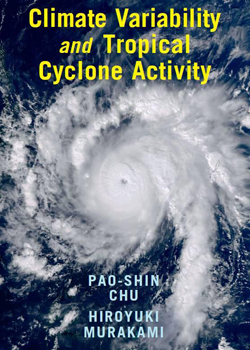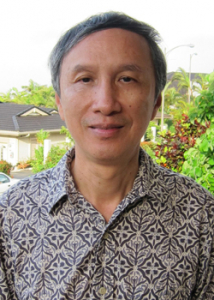
Future projections of tropical cyclone activity in response to the increased concentrations of greenhouse gases is the focus of a new book written by University of Hawaiʻi at Mānoa School of Ocean and Earth Science and Technology (SOEST) professor of atmospheric sciences Pao-Shin Chu and Hiroyuki Murakami from the NOAA Geophysical Fluid Dynamics Laboratory.
“Climate Variability and Tropical Cyclone Activity” was published by Cambridge University Press and is available in the Americas and Asia.
“As Earth warms, we anticipate to see extreme events become more frequent or more intense—meaning increasing hurricane rainfall, flooding and destructive winds; heat waves; drought and wildfires,” said Chu, who is also the Hawaiʻi State Climatologist. “These events will undoubtedly impact communities around the world.”
Topics highlighted in the book include climate variability on various timescales; the effects of different climate modes, such as El Niño and the Pacific Meridional Mode, on the formation, intensity and track of tropical cyclones in the Pacific and Atlantic Oceans; and predictions of tropical cyclones and how climate change will impact associated extreme typhoon rainfall.

This book is intended for use in graduate-level college courses. The material was successfully tested for classroom use during an experimental atmospheric sciences course in SOEST.
“Usually, scientists study climate or tropical cyclones separately but through this book, we tried to combine them so scientists from one side can learn what is happening on the other side and collectively we can improve our understanding of dangerous extreme weather events,” said Chu.
This book is an example of UH Mānoa’s goal of Building a Sustainable and Resilient Campus Environment: Within the Global Sustainability and Climate Resilience Movement (PDF) and Excellence in Research: Advancing the Research and Creative Work Enterprise (PDF), two of four goals identified in the 2015–25 Strategic Plan (PDF), updated in December 2020.

